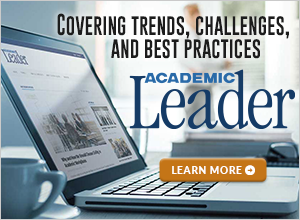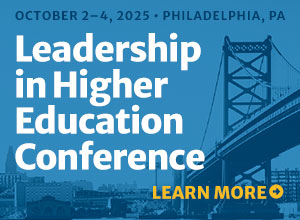Four Strategies to Improve Faculty Buy-In for Online Education
As an online administrator, I can tell you that it feels like we have been talking about ways to improve faculty buy-in for online education for the past 10 to 15 years. And we have. While online courses and degree programs are becoming more accepted and mainstream at many institutions,...
Higher Education: Exporting Middle-Class Dreams
Many countries are currently considering diversifying their higher education systems by modeling U.S. community college-like institutional designs. Vietnam and China, along with other nations, are intrigued by, curious about, yet somewhat suspicious of American community colleges—especially in terms of their relationship to universities and higher learning.
Even if It’s Not Broken, It Can Still Be Improved: Reorganizing for Effective Alignment
When systems and processes are misaligned and do not function effectively or efficiently for students, faculty, or staff, the need for reorganization of academic affairs is obvious. But it’s a daunting task. Broach the topic in a meeting, and you’ll immediately detect a rise in the level of stress in...
Weight Management for Universities: Evaluating Academic Bloat
Historically, new academic programs have often been introduced by several mechanisms. An energetic faculty member is inspired to create a new major, a donor bequest stipulates the development of an interdisciplinary institute, a president mandates a “visionary” curriculum, or a dean or provost responds to a sudden market opportunity.
Adding Graduate Degrees and a Graduate School at a Traditional Bachelor Degree Granting Institution
To make transformational change, one must take certain considerations into account articles about the topic. There is a gap, however, in information about taking institutions from the undergraduate level to the graduate level. Academic leaders must make the case for adding graduate degrees. Will the institution miss out on the...
Capacity-building through International Programs
How do universities continue to build their capacity during a time period of decreasing enrollments and demographic change? As enrollment managers struggle to maintain strong student volume and achieve degree attainment goals, it is critical to build broader and deeper channels for both attracting students and aligning new enrollment with...
The Art of Framing in Academic Settings (Part 2)
Viewing the change agenda through a political lens requires significant insight, careful forethought, and planning on the part of the leader. Regardless of the level of the leader, there are immediate clusters of personnel who represent the first wave of those who must be brought into the fold of supporting the initiative....
The Art of Framing in Academic Settings (Part 1)
Have you ever witnessed a keynote address in which a new university president shared such an inspiring and imaginative future strategy that you wished you were a part of that institution’s implementation team? Innovative thinkers who transform their vision into eloquent language can have that effect on their audiences. Assuming...
Seven Strategies to Grow Online Courses and Programs
As students continue to show interest in taking online courses, and faculty continue to be interested in teaching them, colleges and universities are, in many cases, expanding efforts to increase online programming for their students. This article discusses seven strategies to consider for growing online course and program offerings.
Using Motivational Interviewing to Engage Faculty and Facilitate Change
Motivational Interviewing (MI) is a collaborative communication style, developed in the field of clinical psychology, for strengthening an individual’s intrinsic motivation and commitment to change. Within an atmosphere of acceptance, compassion, and empowerment, people’s ambivalence about change is identified and explored by evoking their own reasons to change with respect...












